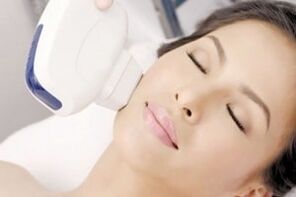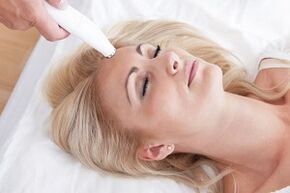Non-Ablative Photorejuvenation is a modern cosmetic technology that improves the appearance and condition of the skin.
The medical effect of a laser can be ablative, based on the destruction of the surface layers of the skin, or non-ablative, in which the heating and, optionally, the targeted destruction of deeper tissues is achieved without damaging the surface layers. The classic methods of laser cosmetology are ablative technologies - skin resurfacing, scar tissue removal. However, modern lasers can stimulate positive changes in the skin without significant damage. Such influences are actively used to achieve an effect called photorejuvenation. Under the influence of a specially created ("enhanced") beam of light - hence the word "photo" smoothes small and medium wrinkles, improves skin tone, restores elasticity and smoothness of the skin; skin aging stops.
Photorejuvenation mechanism

With non-ablative photorejuvenation, the microbeam penetrates the tissues to the required depth (up to 3 mm). Crossing the epidermis (superficial layer of the skin), the beam does not interact with it. In the deeper layers of the dermis, which are the target (target) of penetration, under the influence of a light beam, a large number of young collagen molecules are produced - a protein that forms the basis of connective tissue andis responsible for its strength and elasticity. The energy of the laser pulse heats all layers of the skin, helping to improve microcirculation.
The best result is obtained in young and middle-aged people, that is, the method is most effective in correcting the first signs of skin aging (from 30-35 years). This is due to the fact that the effect of the laser activates the reactive forces of the organism itself, and age reduces their activity.
Indications for laser skin rejuvenation
- wrinkles, sagging and dull skin color;
- noticeable rosacea network (spider veins);
- black dots.
Effectiveness of the method
The result is noticeable even after a procedure (appears after 3-4 weeks). A laser rejuvenation course usually consists of 3 to 10 procedures. The break between procedures should be 1 month.
The effect of non-ablative photorejuvenation consists of:
- visible smoothing of wrinkles;
- reduction of skin dryness, the feeling of "pulled" skin disappears or significantly decreases;
- increasing tone and turgor;
- give the skin shine and velvety;
- improve the complexion;
- normalization of metabolic processes; the pores are reduced, the skin is cleansed.
The procedure is used to effectively stop the aging of the skin of the face, neck, hands, décolleté.
Additional benefits of laser rejuvenation

- Non-ablative photorejuvenation refers to gentle, non-traumatic methods.
- The procedure is painless.
- Does not require significant expenditure of time (the average duration of the procedure is 30 minutes).
- There are practically no side effects (immediately after the procedure you may feel a burning sensation on the skin; redness and slight swelling are also possible, which will disappear within a few days).
- This does not require a period of rehabilitation. After the procedure, you can immediately resume your usual lifestyle and your usual activities.
- It can be combined with other cosmetic procedures to achieve a synergistic effect.
Contraindications to non-ablative photorejuvenation
Non-ablative photorejuvenation is contraindicated in cancer, diabetes mellitus, pregnancy, infectious diseases, epilepsy. In addition, the procedure is not recommended for those who have a cool tan (up to 2 weeks).







































